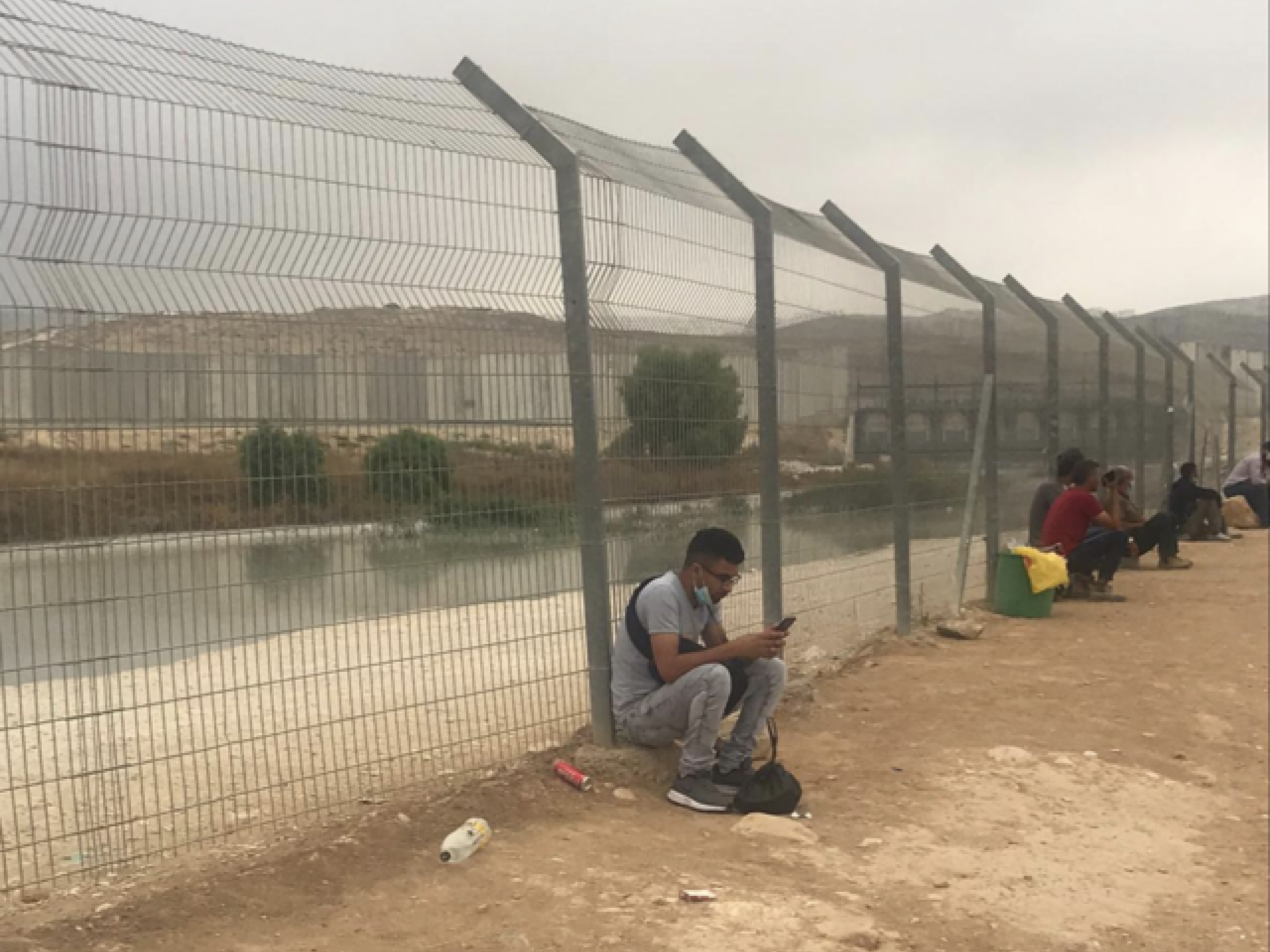דרום הר חברון
Meitar checkpoint
A long line of cars awaited us at the entrance to the checkpoint. Many trucks are loaded with sand that unload the sand in special facilities that are on the entrance side of the checkpoint and return with gravel from the quarries in the southern Hebron Mountains using the "back to back" method. Apparently the delay in crossing the checkpoint was due to a dispute over information leaflets related to Corona. We did not receive any.
In the laundered language of the occupation, a checkpoint is called a "crossing" and a large sign 'Welcome to Meitar Pass” received those coming. Only in small letters are you informed that you are entering military territory. These are barriers and not crossings (in the words of the security system) - because these are not neutral facilities where everyone who travels between the occupied West Bank and Israel passes, but which block beyond the majority of the Palestinian population and does not exist for the Jews at all. These are the words of Amira Hass in Haaretz in September 2019.
We entered by car into the area from which the Palestinians entering Israel are leaving. When the car windows were closed the view looked really pastoral. I thought that as part of improving the passage, a stream was being planned for the well-being of the passers-by, but as soon as I opened the window a terrible stench rose from the "stream" and did did not leave me for many hours after I left the place. It seems to be the sewage from the Hebron River.
Due to the closure and high morbidity in the Hebron area, we do not get out of the car. We continued our journey on Road 60 to Khursa. All the intersections we passed were open and the amount of Palestinian vehicles on the road was very sparse.
and high morbidity in the Hebron area, we do not get out of the car. We continued our journey on Road 60 to Khursa. All the intersections we passed were open and the amount of Palestinian vehicles on the road was very sparse.

